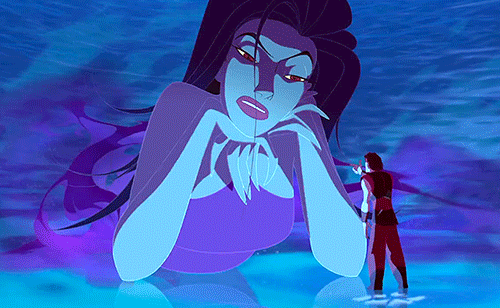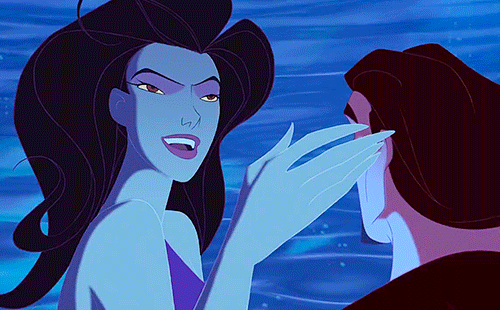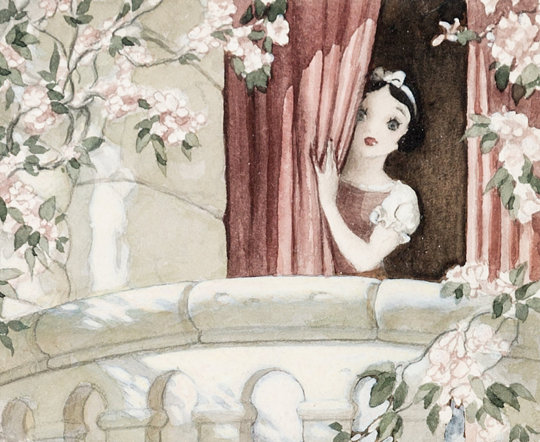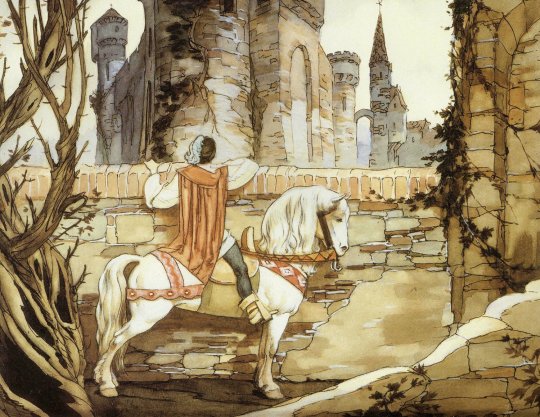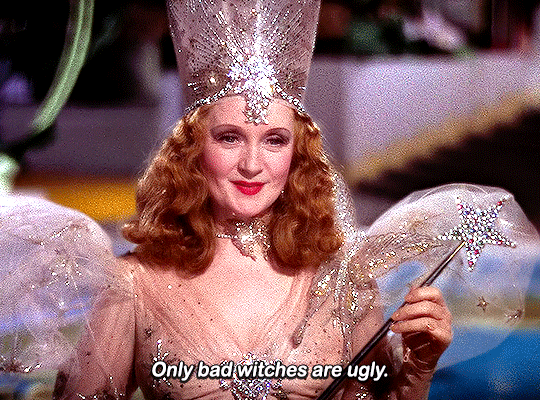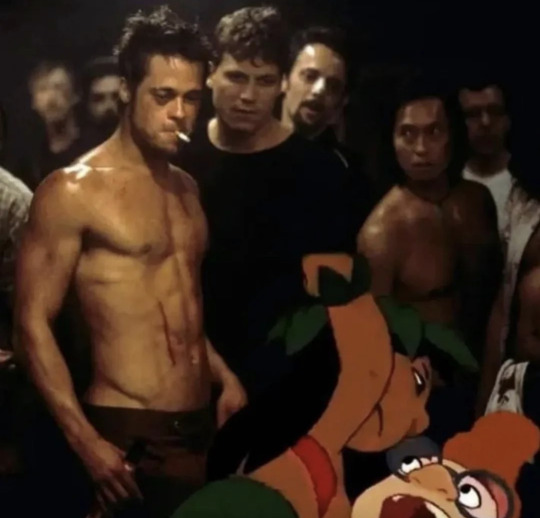Text
May 2024 Movie Challenge

Mother's Day s this month. Watch any movie where motherhood is a central theme.
Cannes Film Festival is also this month. Watch any movie that has won the festival's major award, the Palme D'Or.
Criterion has recently launched a 24/7 streaming channel. Watch one of the movies they've aired so far.
Furiosa comes out this month. Watch a car movie! Some suggestions.
Watch a movie where a character is out of their usual environment or a fish out of water. Some suggestions (but there are a lot more than this around!)
It's Free Comic Book Day this month! Watch a movie adapted from a comic book or manga.
Watch a movie where the justice system is involved (courtroom drama, prison drama, crime drama, etc.)
May is apparently mystery month. Watch a mystery film. Some suggestions.
It's Spring in the Northern Hemisphere and Autumn in the Southern. Watch a movie that embodies either season. Some suggestions for Spring and Autumn.
Watch a film with a character's name in the title i.e. Rebecca, Dr. Dolittle, Mrs. Harris Goes to Paris.
10 notes
·
View notes
Text
Ah, my old Fantasy March prologue. Be interesting to watch some more fantasy movies this March...or, at least, drop this Letterboxd list of fantasy films to watch. At least that. For now.
Oh, and if you wanna read that review of The Hobbit I hinted at above, here you go! Part 1, Part 2, Part 3, and the Review!
March: Fantasy
Reality is overrated.
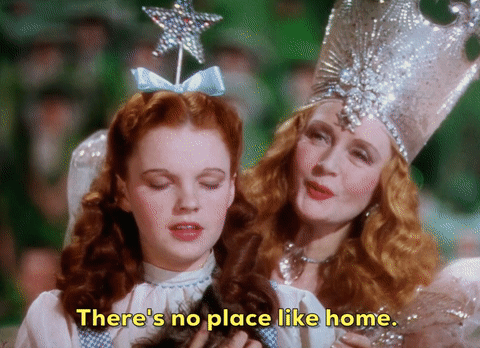
So far this year, most of the movies I’ve seen have been heavily steeped in realism, governed by the physical rules that we’re all too familiar with in our world. But where’s the fun in that? After all, some of our best fiction comes from fantasy and mythology, so let’s fantasize a little!
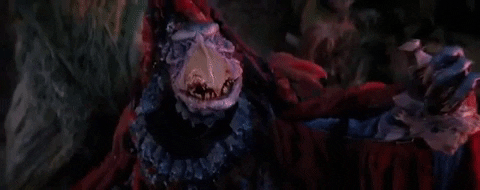
But OK, these introductory entries are meant to talk about what each of these genres actually mean, so let’s dissect the fantasy genre in film a little bit, huh? What does fantasy actually mean?

Basically, like I said, take the physical rules that govern reality and turn them on their head, while adding a few extra rules in the process. Magic, monsters, and mythology! Imagination abound, and the fantastic reigns! Essentially, plots in fantasy genres revolve around things that can’t be explained by our world’s physical rules.

Now, I’m not talking about more existential concepts like fate, which is discussed in romance films as well (you know, star-crossed lovers destined to be together). No, instead, these are tangible factors that are proven and often controlled in the world of the film. Things that have physical evidence to back up their existence.
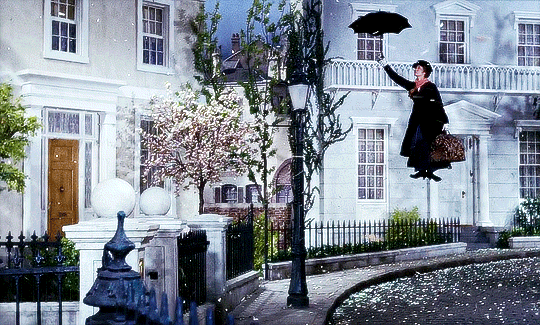
Fantasy is, unsurprisingly, a genre that I’m a fan of, and one that I’m excited to be getting into. However, that comes with a price: I’ve seen most of the big boy fantasy films. As a relatively unpopular film genre (and historically quite unsuccessful), the library is more limited than action or romance was.

And so, I’ve seen the big guys. You know, your Harry Potter, your LotR, your NeverEnding Story, so on and so forth. But, that doesn’t mean there isn’t more. So, this month, I’ll be dipping into the obscure and the well-known by equal measure, as best as I can. And while I’m at it, I’m going to do something else I haven’t done yet: dip into some animated fare.

I mean, come on, fantasy’s a hallmark of animation, and I’m excited to finally get some of that in here! In fact…why wait? Let’s kick off the month with a section of animated fantasy. And if I’m gonna do that, then I’m gonna do it RIGHT! An animated film of one of the most important fantasies ever made! Let’s start this crazy-ass ride, shall we!

March 1, 2021: The Hobbit (1977)
#fantasy march#fantasy genre#fantasy film#fantasy#fantasy movie#fantasy cinema#cinema#film essay#user365#365days365movies
1 note
·
View note
Text
My DC Cinematic Universe: Superman
Listed below are the links to my insane ramblings about what I would do with a Superman film, were I given the reigns to the DC Cinematic Universe instead of James Gunn. Enter if you dare, because this shit is LONG, real nerdy, and just generally a lot. But if you DO read...well, thanks, I really, genuinely appreciate it. Hopefully you enjoyed it!

Part I: Why I Love Superman
Part II: On Lois Lane
Part III: The Kents
Part IV: The 'Rents
Part V: The...Frendts?
Part VI: Lex Luthor
Part VII: The Real Villains
Part VIII: Superman's Rogues Gallery
Part IX: The Story - Act One
Part X: The Story (Acts Two and Three)
Part XI: The Story - Climax
Part XII: Epilogue (Part One)
Part XIII: Epilogue (Part Two)
Part XIV: Epilogue (Part Three)
41 notes
·
View notes
Text

















Aladdin (1992) Dir. Ron Clements And John Musker
878 notes
·
View notes
Text
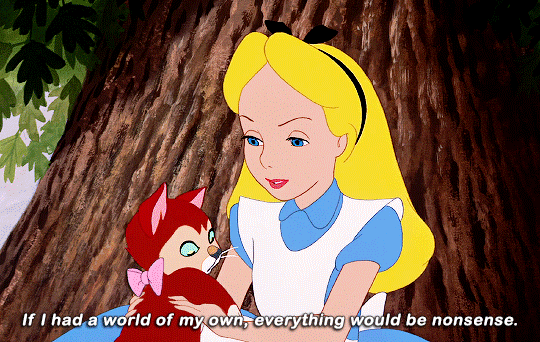
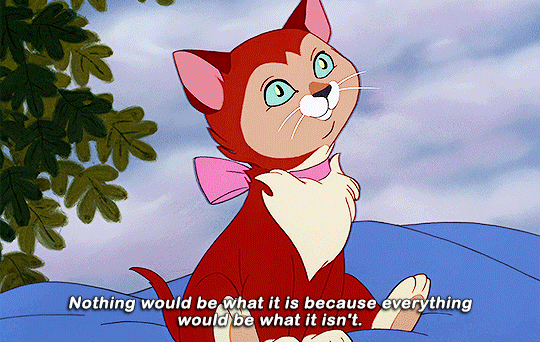

Alice in Wonderland
dir. Clyde Geronimi, Wilfred Jackson, Hamilton Luske | 1951
2K notes
·
View notes
Text
OK, can I just say...can I JUST say...that I think this movie got really badly slept on? Look, I won't claim this is a perfect movie, or the best adaptation of the Arthurian mythos I've ever seen (I mean, honestly, Excalibur and The Green Knight at bare minimum are pretty hard to compete with), but it's cute, wholesome, family-friendly, and fun-as-hell! If you want a soft introduction to the Arthurian legends for your family, or even yourself, this is a nice little movie to pop on for a bit! Plus, hey, Patrick Stewart plays Merlin...kinda!
I dunno, I think this was a fun one that got totally ignored. Even has a 90% on Rotten Tomatoes, but a 55% in the audience score, which is crazy! As for me, lemme do the math real quick...I'd give it a solid 80%. Form your own opinions, check it out! That is all.
on my quest to watch every adaptation i possibly can of king arthur i stumbled on this and UHHH IT WAS SO GOOD AND WHOLESOME??? obviously it is more of a kid friendly retelling of the story, but the way they incorporated all the legends, even some stuff from T.H White, and they even gave us young chaotic Merlin !!!??? i'd definitely recommend watching it, such a cozy movie it is on disney+

#the kid who would be king#action adventure#action film#user365#365 days 365 movies#365 movies 365 days#365days365movies#action january#short review#arthurian legend#king arthur
107 notes
·
View notes
Text
For the record, if you've never seen this film...it's a weird one. Like, not in a bad way, necessarily, but for a Christmas film...it's a weird one. It's based off a book by L. Frank Baum, the creator of The Wonderful Wizard of Oz and the associated literary universe. So, think that flavor of fantastical and eccentric. It's also the last stop-motion Rankin-Bass film ever made, and might have crashed that part of the industry permanently for them? Either way, it's definitely a movie to watch at least one time. At least. Trust me on that one.
---------------------------------------------------------------------------
Want more Rankin Bass? Try these on for size!
The Hobbit (Recap Part 1 | 2 | 3 | Review)
The Last Unicorn (Recap Part 1 | 2 | Review)


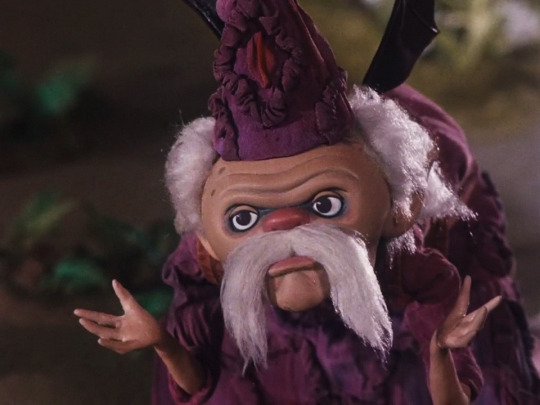


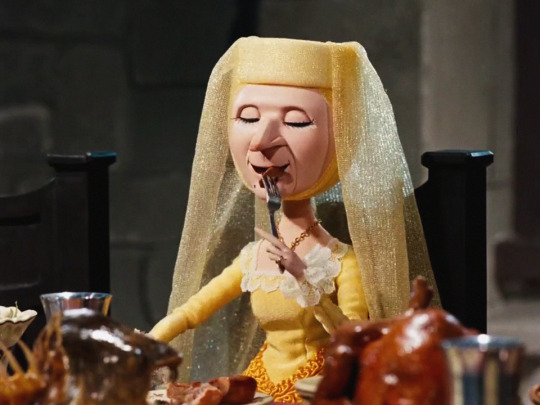

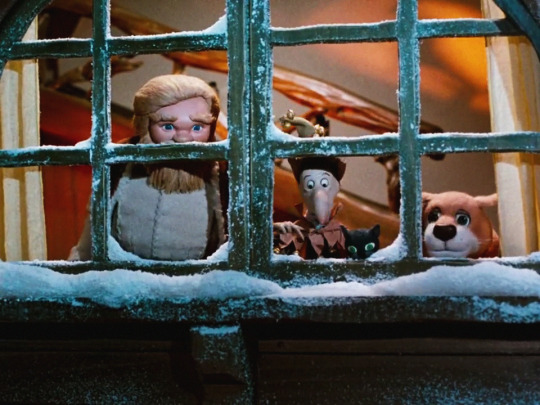
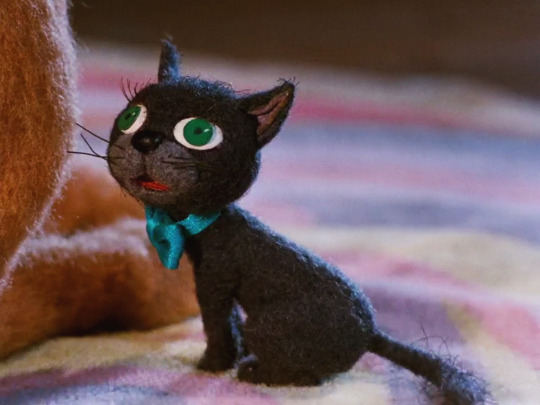






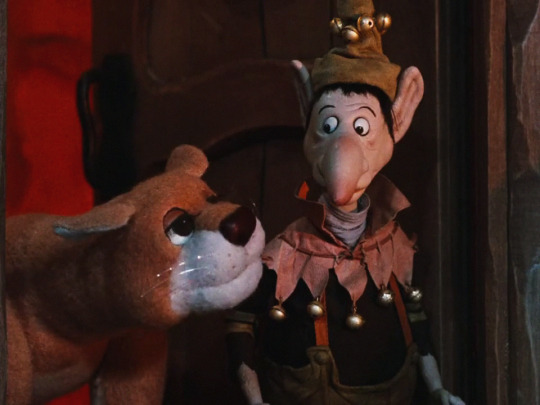
The Life & Adventures of Santa Claus (1985)
[letterboxd | imdb]
Director: Jules Bass & Arthur Rankin, Jr.
Studio: Rankin/Bass Productions & Pacific Animation Corporation
#the life and adventures of santa claus#the life & adventures of santa claus#rankin bass#stop motion#stop motion animation#animation#stop motion movie#jules bass#arthur rankin jr.#l. frank baum#the wonderful wizard of oz#japanese film#1980s#1985#Pacific Animation#christmas movies#christmas specials
355 notes
·
View notes
Text
Action January II: Captain Blood (1935)
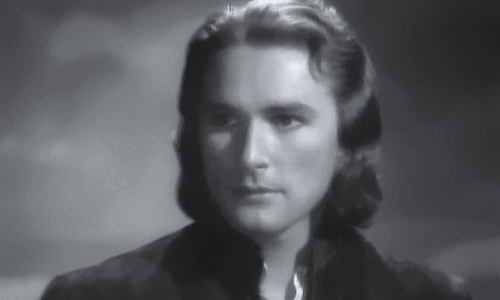
Part Two: A Colorful Fragment in a Drab World
When you think of the Golden Age of Hollywood, it's hard to get more notable than Errol Leslie Thomson Flynn at the height of his career. One of the most prominent leading men of the time period, succeeding Douglas Fairbanks and alongside Clark Gable, he was a mountebank of talent and action. At least...that was a public image of his. The actual Errol Flynn? Genuinely a drunken disease-ridden criminal who maybe exemplifies the idea of dividing the art from the artist. 'Cause, uh...wow. Not a good person, was Flynn.
If you do not care about Errol Flynn, skip to the break; I'll put my five-point review down there so time isn't wasted. I just really want to talk about Errol Flynn. Ready? OK.

Born in Hobart, Tasmania on June 20, 1909, Errol Flynn grew up in a middle class household. His father was a biology professor, while his mother was...well, in his autobiography, Flynn would say that she had "an itch to live - perhaps too much like my own." And given what we know about Errol's "itches", that's saying something. There's some speculation that she was sleeping with a local movie theater manager,leading to Flynn hanging out there often and watching a lot of movies. Is that true? Well, Flynn is a...somewhat unreliable narrator, so take his statements with a grain of salt. He also claimed that he and his mother were descended from some of the soldiers that participated in the famous mutiny on The Bounty, but that's probably not true. However, keep that factoid in mind for later.
Early life was complicated for Flynn, and bad habits emerged early. By the time he was 17, he'd been expelled from 4 schools for inappropriate acts (of violent and sexual natures); he'd joined a local gang; he'd already started his collection of sexually-transmitted diseases with gonorrhea (and he was, uh, quite the collector); and he was working in New Guinea. In New Guinea, he...um...

OK, look here's what you gotta know about Flynn: dude is nasty, in a lot of ways. Most of those ways are, unfortunately, sexual in nature. Since I'd like to be sensitive to the sensibilities of readers, I won't go into every nitty gritty detail. So, starting with his New Guinea adventures, let's just say that he killed a number of native people during colonization efforts, and then did that other classic thing that colonizers have done, historically. You know, that thing that goes with pillaging?
And to be clear, Flynn wasn't ashamed of this. In his autobiography, My Wicked, Wicked Ways, he describes one of the native New Guineans he encounters in...very unfortunate detail. Flynn was a nasty kid, before and after his acting career began. Speaking of which, while he was working in Australia (after fleeing from New Guinea for murder, etc.), he was spotted by director Charles Chauvel, and was offered to be in a film about the mutiny on the Bounty. Crazy coincidence, huh? Errol accepted, and that was his first film, In the Wake of the Bounty, in 1933. It's now disappeared into obscurity, but that was the beginning.

Flynn's career began mostly in the UK, where he acted as extras while getting professional training. Then he threw a stage manager down a flight of stairs and was fired from his repertory company. Because that's Errol Flynn, apparently. He worked on a few more films, married actress Lili Damita, and eventually got the attention of Hollywood. After a couple of small roles, Michael Curtiz tapped him as a 4th choice for his new movie, Captain Blood. Not only was this the first film with Curtiz and Olivia de Havilland (19 at the time), but it was a smash hit. Flynn was a star, the new Douglas Fairbanks!
1936: he works with Curtiz and Olivia again in The Charge of the Light Brigade. 1937: A dramatic role in Green Light, then another swashbuckler in The Prince and the Pauper, a melodrama in Another Dawn, and a comedy in The Perfect Specimen (with Curtiz again), all before acting as a war correspondent during the Spanish Civil War. And then, finally, in 1938, he reunites with Curtiz, Havilland, and Basil Rathbone in my favorite of his films: The Adventures of Robin Hood. And if Flynn was famous before, then that movie really did it.

In the meantime, he gets married to actress Lili Damita in 1935, and this would be the first of 3 marriages. And lemme tell you, it would end tragically for Flynn, hilariously for everybody else. From 1935 to 1939, Flynn's career would take off, and he would work with Curtiz and Havilland a few more times, but things would start to change at this point. See, starting all the way back in The Charge of the Light Brigade, Curtiz and Flynn had regular disagreements. In that film, 25 horses actually died under Curtiz' direction, and the animal-loving Flynn got into a legit fist-fight with his director. And this was the second of seven collaborations together. The two hated each other, but they knew good filmmaking when they saw it. Curtiz' career, by the way, includes Casablanca, just so you know what caliber of director we're talking about.
Flynn's career continued, as did his contentious nature. The Sea Hawk in 1940 continued his career climb, as World War II was in full swing. At the same time, he got badly slapped by co-star Bette Davis (yes, THAT Bette Davis) in the face in The Privates Lives of Elizabeth and Essex during an argument in a scene, which he wrote off as "unrequited romantic interest" (ugh); he had more arguments with Curtiz on Virginia City in 1940, and tried to get him off his own picture; and he co-starred with no-name actor Ronald Reagan in Santa Fe Trail, which is probably the only notable thing that dude ever did.
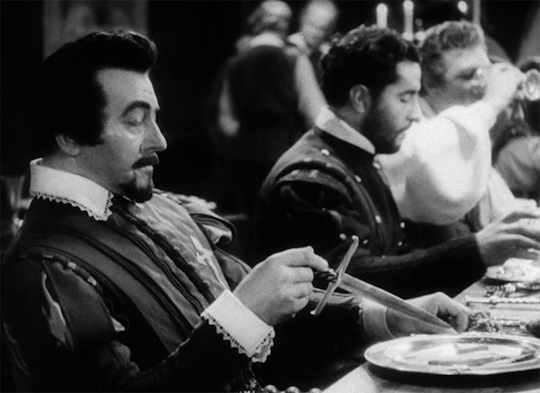
And this, of course, is when the health problems and drinking started. He'd contracted malaria when he was younger in New Guinea, which damaged his heart significantly. And oh, God, the drinking. Flynn was a notorious womanizing, chain-smoking drunk, especially throughout the 1940s. He'd had affairs with everybody (a habit so famous, it's the origin for the phrase "in like Flynn"), and would regularly get into physical fights with everyone else. In the process, he would greatly expand his collection of diseases. By 1942, he had chronic tuberculosis, recurrent malaria, gonorrhea, syphillis, and a host of unrecorded STDs. This, combined with heart damage and back pain, made him ineligible for service during World War II, which had many believing he was a draft dodger (since studios didn't want word of their big star having that many STDs). And that's not all!
See, Lili's getting sick of the whole "constant cheating and STD" thing, so she files for divorce. Said divorce had insane conditions by today's standards, and would essentially had Lili rolling in Errol's money FOR LIFE, while leaving Errol with far less money for the rest of his days. How could this get worse? Easy; he was being sued for statutory r*pe that year as well, and nearly resulted in a 25-year prison sentence. He was acquitted, because Hollywood's always been bullshit, but his reputation was...well, frankly, it was fucked. And at this point, Flynn was only 33 years old. Jesus Christ.

After this, Flynn would never fully recover. Oh, he was still in movies, but his drinking and partying continued, and his reputation somehow got even worse. He would show up blasted to sets, ending his relationships with many directors. His appearance started taking a nosedive due to his health and behaviors. He got married again, in 1943 to Nora Eddington, somehow, but Nora later regretted that marriage. Scandals continued, like the time newspapers found out he'd installed one-way mirrors in his mansion's bathrooms in order to look at his female guests secretly (ew. EW.), and he added hepatitis to his collection of diseases.
Marriage #3 comes along in 1950, and Flynn moves to Europe in 1954 for his films. He's there for a few years, until finally getting a call back in 1957 to star in an adaptation of Hemingway's The Sun Also Rises. Flynn idolized Hemingway, and actually wanted to be an author just like him. Might have accomplished it, if not for the EVERYTHING ELSE he was doing. Still, he accepted the role, which cast him as a pathetic drunk has-been, past his years and prime. What I'm trying to say is, he crushed it. Hard.
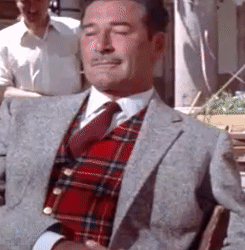
Flynn's back, baby! And now, he's being typecast as a drunk. Which, again, is what he was at this point. Also, I should clarify, alcoholism is absolutely a disease, and my issues with Flynn have nothing to do with the fact that he was an alcoholic. However, he was constantly drunk, that's just a fact. His success in The Sun Also Rises revitalized his career in the late 1950s, and things were looking good. He even started up his old journalism ambitions when he traveled to Cuba during Castro's revolution, and was the only journalist there when Castro won.
In 1959, though, Flynn's financial difficulties had become too much, even with his career rebirth. He went to Canada to sell a yacht to a guy, then flew back to Los Angeles on October 14. In the process, his back and legs started acting up. Not unusual for him. The doctor in LA noted that Flynn could barely walk up the stairs, then gave him some Demerol, a massage, and good conversation. Flynn said he "felt ever so much better", and the doctor left. A 17-year-old girl that had been traveling with him (yeah, that sounds horrible) went in to check on him 20 minutes later.

Errol Flynn died on October 14, 1959, at the age of 50. His cause of death was found as a heart attack from coronary thrombosis, atherosclerosis, and severe cirrhosis of the liver, amongst the STDs that plagued him his entire life. Flynn was buried with six bottles of his favorite whiskey at Forest Lawn Memorial Park Cemetery in Glendale, California. He had once said he hated this place, and never wanted to be buried there, so you gotta imagine that his current marriage wasn't going great either. Jesus.
But even after he died, Flynn's legacy continued to degrade. His autobiography came out, which didn't really help him image much. His work as a war correspondent was put into question as illegitimate, and thought to be used only to promote his films. That 17 year old that discovered his death revealed that yes, that sentence was as creepy as it sounded, and Flynn never learned his FUCKING LESSION. He was also possibly outed as bisexual, which is obviously fine (assuming the bisexual community wants to claim this asshole at all), and I only point this out to say that he was described as "super-straight" by Iron Eyes Cody. And who's Iron Eyes Cody? Trust me. Look him up. You don't wanna trust a goddamn word that dude said.

So, with all of that bullshit said and finally done...Errol Flynn was still an excellent actor. Yeah, I honestly mean that. IN fact, I'll elaborate in a minute here in the review below. So, read on if you're interested in that. And if not, honestly, watch Captain Blood and The Adventures of Robin Hood yourself, and make your own opinions. Just saying, he could act. Separate the art from the artist, people.
Review
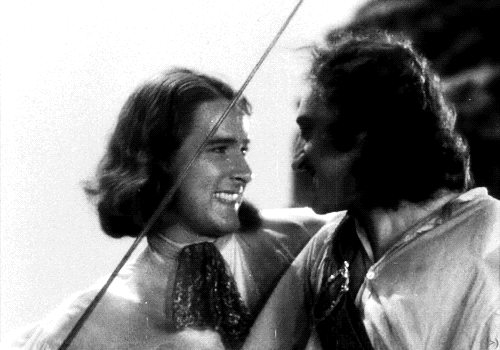
Cast and Acting: 9/10
Just to get our leading man out of the way, Errol Flynn is fantastic in this movie. I mean it; for a guy who'd barely been in movies, and for this being his first leading role, he knocks it out of the park. Suave and debonair, defiant and headstrong when he needs to be, and someone you're charmed by as much as the characters on screen are. Plus, the swashbuckling is fun to watch, and credit should go to Flynn for some of that. Genuinely a star in the making; just forget all that other stuff from above, OK?
And everybody else? Olivia de Havilland, who's only 18 during filming, by the way, is also great in this movie. And again, this is one of her first films. Crazy, huh? Her role is uncomplicated, but she plays it very well! Basil Rathbone isn't in here for long, but he's a scene-stealer...partially because his French accent feels forced, and he's maybe a little over the top. Still, extremely fun to watch. Same could be said for Lionel Atwill, although he sort-of just drops off in the middle of the picture, when he could've been a real commanding antagonist. Missed opportunity, that one. As for the pirate crew, like Ross Alexander and Guy Kibbee, they're not bad! Meant in some cases to be comic relief, which is done well, but also portrayed as a loyal and faithful crew. Throw all of these performances together, and you get my final score. Solid all around, with a little scenery-chewing here and there.
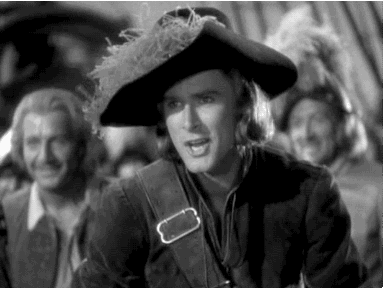
Plot and Writing: 8/10
Honestly, this is both a standard swashbuckling plot (man of high-standing gets plunged into low-standing, then fights his way back to prowess via sword and fisticuffs), but also very different in some ways. It's based off of a novel by Rafael Sabatini, and certainly has a memorable and easy to describe story. However...and this is a soft however...Blood's gonna win. It's not the least predictable plot in the world, since you know Blood's gonna win and get the girl in the end. It also has a surprisingly bloodless ending, all things considered. Yeah, I know there's the battle with the French in the end there, but only one named cast member (Basil Rathbone) actually dies. It's fun to watch and easy to recall, but...kinda toothless in the end. Also, Blood is a bit of a Gary Stu most of the time, which isn't the best character work you can do.
Writing by Casey Robinson, though, is still fantastic. This is a SOLID adaptation of the book, from what I can tell, and Robinson manages to spice up a standard plot with some entertaining and engaging writing throughout. Honestly, this is a fun movie, and the writing helps with that quite a bit. Even got the Oscar nomination that year for Best Screenplay, but lost to The Informer. In fact, it technically wasn't officially nominated by the committee, but was instead nominated by write-in. That is how popular this film's writing was.
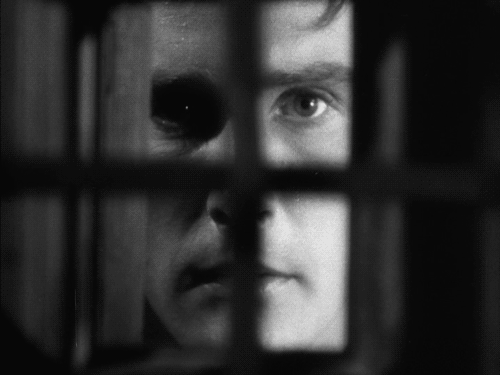
Direction and Cinematography: 9/10
Michael Curtiz, frankly, is a legend. And sure, I can't say this is a groundbreaking film in terms of direction in some ways, but good goddamn, does Curtiz still do an excellent job. This is especially notable when looking at the action scenes, like the beach swordfight, or the siege on the French ships (as seen in the GIF below). Seriously, though, this is a great-looking film, both due to legendary director and legendary cinematographers Ernest Haller and Hal Mohr. The former is best known for Gone With the Wind (I hate that movie, but it's admittedly gorgeously shot), while the latter is known for The Phantom of the Opera and...The Jazz Singer. Ooh. Yikes. Moving on!

Production and Set Design: 9/10
Again, kind of standard fare for the time period in some ways, but still a great looking production! You feel like you're on a ship or tropical island for most of the film, despite the entire film being made in California. That ending scene with the French ships? 2,500 extras were in that sequence, making it one of the biggest films ever made at that time. This is impressive production, including the prop work and...well, OK, one problem. The costumes are mildly anachronistic. It's nothing crazy, but keep in mind that this film is meant to take place in the 1650s. With that in mind, this feels far more like a film from the 1800s instead. This is a minor nitpick, but a nitpick nonetheless. Frankly, I've really had to try and find flaws with some of this stuff, because this film is genuinely great.

Music and Editing: 9/10
Music here is by Erich Wolfgang Korngold, another film legend and notable composer. His career very much followed Errol Flynn, as this was his first huge picture (not counting 1933's A Midsummer Night's Dream), and he would also score for The Adventures of Robin Hood, The Sea Hawk, and The Private Lives of Elizabeth and Essex. This booming brass score is your stereotypical swashbuckler tune, meaning that Korngold helped create that stereotype in the first place. It's iconic, it's memorable, and it makes for solid background in a action scene. Even did that thing where the sword-clashes are timed with music sometimes! Again, classic.
George Amy is our editor for this picture, and he's a legend in his own right. A powerhouse for Warner Brothers, Amy was a favorite of Michael Curtiz, and ended up editing the majority of his films (but not Casablanca, funnily enough). He definitely does well here, although I felt like one or two sequences could use a little trim here and there. Nothing really felt unnecessary, but there could have been a little something different in the near-mutiny sequence, for example. That sequence is maybe the weirdest in the film for me, as Blood sort-of gaslights the crew into following him into certain fucking death. Again, kind of a nitpick for me, but it did affect how I saw Blood, and maybe could've been changed to adjust the pacing of the scene.
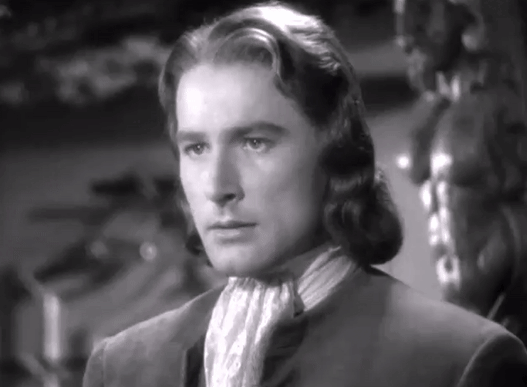
Verdict: 88%
Pretty sure I've hurt some critic's feelings with that number, so I feel the need to clarify something: this movie's goddamn great. It's the progenitor of the swashbuckling genre for a reason, after all. This is a crazy fun film, but I won't give it an excuse because it's a classic. But would I watch this movie again? Absolutely. Like I said, a hell of a lot of fun.
Time for another classic action-adventure movie to continue the classics train, but let's jump forward a decade for this one, huh? Post World War II, classic director, and a precursor to the true action genre. And as always, one that's been on my list for a long time.

Next: The Treasure of the Sierra Madre (1948);
dir. John Huston
#user365#365 days 365 movies#365 movie challenge#365 movies 365 days#365 movies a year#365days365movies#action january#action#swashbuckling#action movie#pirate movie#errol flynn#captain blood#michael curtiz#olivia de havilland#basil rathbone#biography#action genre
3 notes
·
View notes
Text
Action January II: Captain Blood (1935)

Part One: By the Sword
Fun fact about me: I am a non-classically trained fencer.
By which I mean I went through formal training as a child (starting at 6 or 7), then continued it sporadically through my youth and college. Kept up with it a little after college, but I'm no longer a fencer. Still, it was a pretty prominent part of my life, and one of the more bougie facts about me (of which there are admittedly many; I am, for example, struggling to not type bourgeoisie). I look back on it fondly, but it's not for modern-day me.
Still, I've always had a soft spot for swashbucklers, especially in film. Sure, traditional épée fencing doesn't resemble your typical swashbuckling film fight, even a little bit. Usually, épée with the fencing gear is put in a movie or TV show to demonstrate that the character or establishment practicing it is high-class or rich. Instead, I suppose cinematic swashbuckling is more similar to sabre fencing, which has a larger target zone than épée fencing, and usually involves grander movements...but even then, I've never seen any sabre fencer swing from ropes and rafters like, well...

Zorro is a character that I've talked about before on this blog. I've also covered the swashbuckler briefly in that post, but let's get a little more comprehensive this time, shall we? Zorro is maybe the prototypical swashbuckler character, starting with Douglas Fairbanks' epic film The Mark of Zorro in 1920! Yeah, old as hell. He was daring, dashing, and debonair; dressed in black and fighting for justice to get the girl and save the day, armed with only a sword and his wit! The prototypical action hero! Throw in some great choreography and epic music, and voila! A swashbuckler! To put one together properly, we need:
A dashing hero, with devil-may-care attitude that fights for the moral right. If we're talking in DnD terms, you can call this person chaotic good alignment, usually. Swinging from the rafters, a sword in hand and often a smile on their face. And, of course, a romantic aim and goal.
Swordfighting. Kind of critical to the genre. Swashbucklers are films that use swordfights as the driver for the plot. While not every action sequence may involve a sword fight, the main hero is always either armed with their sword or looking for it. And then it's time for the climax, you better believe we've got a big-ass swordfight on our hands. The villain of the piece, at least one of them, should also have a sword in hand.
A sweeping score is a very typical piece of these films. Whether in the past or present, swashbuckling can't be done without an iconic leitmotif for the hero, and battle music times to the clashes of steel. Usually throw some brass or strings in there, and you have a swashbuckling score.
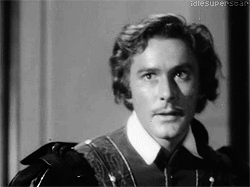
Now, of course, there are a lot of swashbucklers out there based on those definitions, and...yeah, there are a lot of swashbuckler films! While The Mark of Zorro is typically called the first swashbuckler, it's not the first film to involve narrative swordplay by any means. The Count of Monte Cristo (1908) is probably the first of those, but there are others like The Prisoner of Zenda or Kidnapped. You may also notice that some of the classic swashbucklers are based on classic literature, like those above, and like Cyrano de Bergerac, The Scarlet Pimpernel, The Man in the Iron Mask, and the most prominent of these...
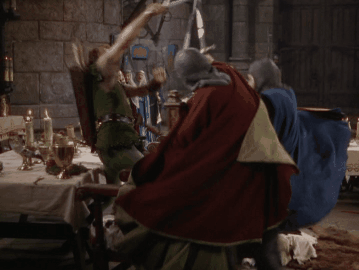
It's funny, for a character best known for his archery skills, Robin Hood gets into a lot of swordfights. Some of the most iconic filmed swordfights come from the emerald archer from Sherwood, and for good reason! There have been countless adaptations of the original stories, which are crazy cinematic, and they all take place in medieval England, during a time period where swords were predominant weaponry. Combine that with the fact that Robin Hood is, in many retellings, a nobleman who would've been trained in fencing, and you have a natural swashbuckler setup!
And honestly, Robin Hood is sort of the perfect swashbuckler. A morally good hero fighting against the evil establishment, for his friends, contrymen, and the woman he loves. Epic music, daring setpieces, classic fights, a lot of swingin' rafters...yeah, it's perfect. And again, one day, I'll talk about The Adventures of Robin Hood from 1938; one of my favorite action films, and my favorite adaptation of Robin Hood for sure.
But there's another type of swashbuckler that's just as iconic as those listed above, also involving a setting conducive to sword-based action, but often with heroes that are...a little more morally grey.
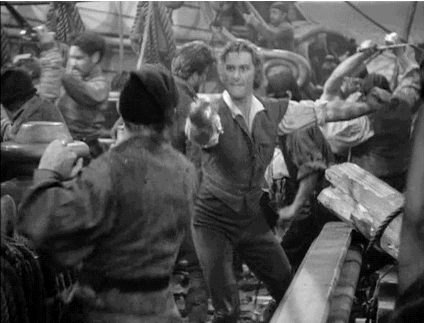
Pirate films are essentially a subgenre of the swashbuckler (yes, a subgenre of a subgenre of a subgenre), focusing on high-seas action rather than fighting in a hall or castle. The pirate film is a curious beast, appearing in film history in sporadic bursts, with no real period to call its own. They were popular from the '30s through the mid-'60s, had a tiny boom in the '80s, got badly nuked in the '90s, and then had another tiny boom in the '00s with the Pirates of the Caribbean franchise. They're always around, but never the first genre you'd think of when you think of action films.
Still, pirate films have an iconic feel to them all their own. The wind in your hair, the daring sword fights against a surly knave or an overzealous government stooge, depending on the nature of your morally dubious hero. Hell, maybe the hero has resorted to piracy after being wronged or lost at sea, and we're rooting for him and his lost honor. Either way, he's got an open shirt and a sword in his hand, and his crew are there to back him up (or betray him; again, depends on the narrative). You know a pirate film when you see one. And that's where I'm headed today: to the open seas with Captain Blood, starring an iconic action star of the 1930s and '40s. In fact, he's so iconic, almost every one of the above GIFs includes him.
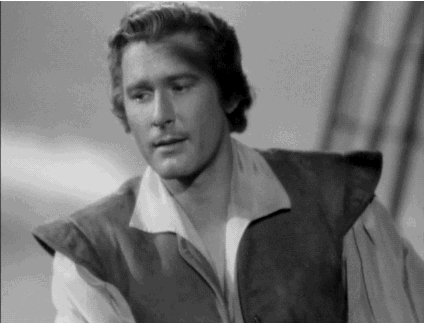
Errol Flynn is undoubtedly a major film figure of his day. He's also got a fascinating and...sometimes troubling personal history, putting him up there with some of the great Australian film actors in cinema. But as much as I'd like to talk about Errol Flynn (and I probably will later), I'd like to finally jump into the film that made him famous: Captain Blood, a 1935 film directed by Michael Curtiz, another interesting figure with some...interesting history with Flynn. Again, more later.
Flynn was an unknown before this role, and immediately became an audience and studio favorite, essentially succeeding Douglas Fairbanks as a films and action star. Only 26 at time this film came out, Captain Blood was the beginning of an often turbulent career for Flynn, who would die at only 50 years old. Again, more on him later. And so, without further ado...SPOILERS AHEAD!!!
Recap

It's 1685 in England, and there's a rebellion happening! Known as the Monmouth Rebellion, it involved the deposition of James II, after succeeding his brother as king of England, which was contested by Parliament and Protestants, as James II was a Catholic king. Anyway, during the rebellion, Doctor Peter Blood (Errol Flynn) is summoned to aid a friend injured in a skirmish. A retired adventurer and swashbuckler in his own right, Blood is determined not to re-enter the...fight...
Is this Commando? Like, where a retired hero is forced to come back to fight for his country, and won't come back until a personal tragedy or offense is done to him? You know, like Commando? Just calling it now, before it happens.
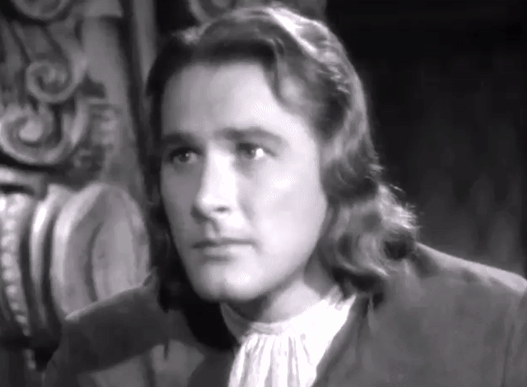
As Blood is helping his friend, he's taken away and sentenced by Judge George Jeffreys (Leonard Mudie), who accuses him of being a liar and traitor to the crown, despite his complete innocence. Imprisoned and set amongst a group of similar prisoners for months, he attempts to defend himself on the stand, only to condemn himself even further beneath a biased kangaroo court. And for the record, Flynn immediately proves why he's so beloved at this time. He's an excellent actor in this scene, and I immediately sympathize with Peter Blood.
Meanwhile, King James II (Vernon Steele) is convinced by his advisor to send the convicts to the West Indies as slaves, as actual slaves are too expensive, and these guys are free of cost. So, yeah, British monarchy not looking too great. In any case, we set to sea for the first time, in the belly of an unrealistically humane slave ship. In Blood's words, the King was "granted their lives in exchange of an uncertain death". And with that, Blood and the convicts are sent o Port Royal, in Jamaica.

The convicts are set for sale (hate it), and most of them are sold to Colonel Bishop (Lionel Atwill) and his niece, Arabella (Olivia de Havilland). When she observes Blood's rebellious nature at being inspected like cattle, she decides to keep him from working in the mines on her own spoiled whims. Blood's not a fan, and the two immediately clash. Which, obviously, means they're gonna fall in love by the end. Come on, we know how this goes.
Blood's sent to work on the plantation with Bishop's other slaves, on a grinding mill that loves like it's ripped out of Conan the Barbarian. We see the indignity of slavery through...white slaves. Yeah, trying not to think about it, since this is a thing that happened, but it's tough. Anyway, our traitors are taught a lesson about treason, as an escapee is branded on his fucking face, and the prisoners all say how much they hate the fucking King. Great job, James, really fanning the flames of patriotism there.
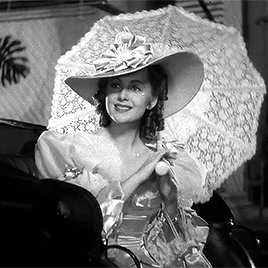
Meanwhile, the uncaring and selfish governor, Steed (George Hassell) is complaining of gout, and is in need of a physician. Knowing of Blood's former profession, Arabella recommends him as Steed's physician, and is mostly elevated from the role of slavery, which seems...insanely easy. Irritatingly easy, even. But whatever; at least he hasn't forgotten his friends, his actual station, or the fact that Arabella bought him for 10 goddamn shillings! He's still understandably bitter about that.
However, he's in very good favor with the governor for relieving his gout, unlike the previous doctors Bronson (Hobart Cavanaugh) and Whacker (Donald Meek), who attempt to plot to get rid of the much more competent Blood. He puts them in their place, but begins a plot of his own. With the other slaves arrested for treason, he plans an escape attempt from Port Royal, with the help of friend (and the guy who got him in this mess to begin with, Jeremy Pitt (Ross Alexander). However, in the process, Colonel Bishop suspects some kind of plan, which is only circumvented with the help of Arabella. In the process, however, Pitt is captured and flogged for questioning.
While his friend is getting horribly whipped by the Colonel on the stockades, Blood and Arabella flirt (as expected), although a kiss from Blood is received poorly due to his status, leaving the encounter on a sour note. Peter goes back to care for the Governor before their escape that night, then finds Jeremy at the stockades and cares for him as well. He's caught by the Colonel showing mercy, and is about to share Jeremy's fate when a ship attacks the port.
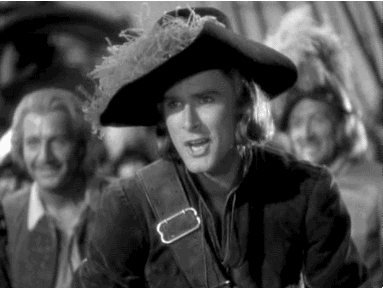
This ship belongs to the Spanish, and the sailors aboard lay waste to the port. It's at this point that the slaves see an opportunity, and make their way to the ships. They take over the Spaniard's ship, and wait until the morning to take out the returning Spaniard captain and soldiers. With navigator Pitt and new gunner Henry Hagthorpe (Guy Kibbee), the new crew sets sale and escapes, under the purview of the new Captain Blood.
Colonel Bishop, like...like a fucking idiot, sails out on a rowboat to thank the men, not realizing it's his own slaves. And then, when he finds out, he still intends to keep them as slaves. THEY HAVE A SHIP, DUDE! You're fucked. Instead of killing him, which they consider, they toss him overboard, and Blood's crew sets sail for the Caribbean Sea, leaving Arabella behind. They abandon their citizenship, and officially become pirates.

The crew of Blood becomes famed and infamous across the seas, to the irritation of King James II himself. With Governor Steed having lost both money from the Spaniard assault, and being unable to reign in Blood in the first place, his appointment as Governor is given to Colonel Bishop, who swears to take care of Blood once and for all. Arabella is conflicted about this, but she's shipped off to England along with Governor Steed.
On Tortuga, Blood signs a deal with another captain, the French Levasseur (Basil Rathbone), and the two become partner pirates. Later on, Arabella finishes her extended holiday in England, traveling alongside Lord Willoughby (Henry Stephenson), who has been tasked to take out Captain Blood. On their journey, they see Levasseur's ship, which attacks them and takes the passengers hostage on a nearby island. They are soon joined by a surprised Peter Blood and his crew, who pretends not to know her.
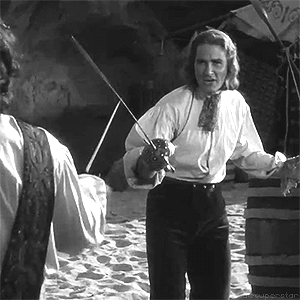
Blood and Levasseur engage in an argument, as one of the articles of their contract was that no female prisoners would be taken. As a compromise, Blood pays for her ransom, both to save her and as payback for his purchase of her many years ago. This still enrages Levasseur, who wanted Arabella for himself, and he forgoes his honor to challenge Blood to a fencing duel. Fun fact, by the way: Basil Rathbone was an actual fencer, classically trained, and far better than anyone he ever fenced with on-screen, Flynn included. But, since he always played the role of a villain and cad, he was always forced to lose. And this fight is no exception.
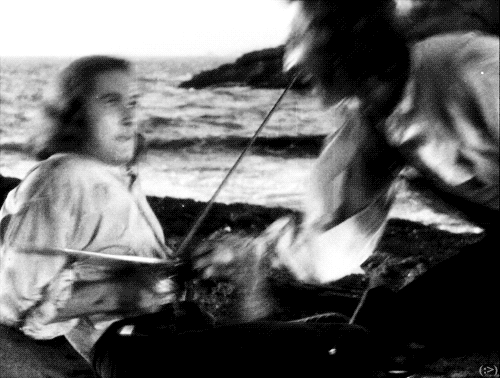
Levasseur is killed by Blood...which is crazy, since he's Basil fucking Rathbone, and he was in this movie for maybe 5 minutes altogether as essentially a cameo, but...c'est la vie, et la mort. Arabella and Willoughby are brought on board, only for Arabella to angrily reject him. And yes, she's absolutely a goddamn hypocrite, but she's not fully unjustified. She puts Blood down as a beast like any other pirate (unfairly, of course), and Blood angrily rebukes her in turn. Even then, he plans to bring the two hostages back to Port Royal, where they are certain to die.
Willoughby and Arabella speak, where he convinces her that Blood's genuinely not a dick, and tells her that they're headed to Port Royal. At the same time, Blood's crew refuses to sail to Port Royal, officially acting in mutiny against Blood. And Blood...gracefully surrenders his command of the ship, admitting his affections for Arabella to be driving him against logic. And that ironically turns the crew back to Blood's command. I can't tell if that was a sign of their actual bond, or some straight gatekeeping-girlbossing-gaslighting from Blood, but...yeah, they're still going to Jamaica.

As they approach Port Royal, though, they find it being attacked by two French ships. Willoughby, finally being able to speak with Blood, informs him that France and England are at war. To their surprise, though, Governor Bishop isn't present, nor is the English fleet, since they're out chasing pirates. And so, the only ship to defend Port Royal against the French, is...well, Blood's.
It's then that Willoughby finally reveals his purpose for seeking Blood and his crew: the King has pardoned him. Obviously, they're not a fan of King James II given what he'd done to them, and refuse the offer. But then, Willoughby reveals the other political change: James II is out as King. With that knowledge, Blood and his men decide to fight for the English Navy, and for the new King William III.
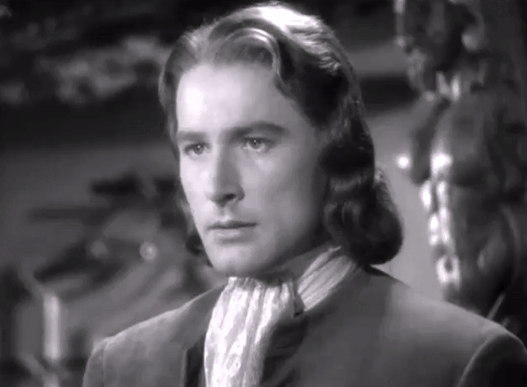
Arabella is shuttled ashore, while the ship sails under a French flag to disguise themselves. They easily ambush the French ships attacking the Port, wrecking one and causing it to fucking explode. Honestly, it's pretty sick. The other ship mounts a harsher assault, and Blood's crew is forced to abandon ship. Instead, they simply take the French ship for themselves. And as the Captain swings over, you realize something: this is the prototypical pirate movie.
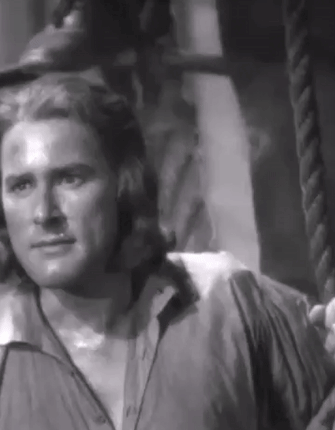
Yeah, OK, earlier films like The Black Pirate, as well as later ones like The Sea Hawk and Treasure Island, would be a major framework for pirate films in the future. But good goddamn, if this doesn't feel like a pirate movie, I don't know what does. The score is sweeping, the action is epic, and it's honestly just fun. And the most ironic thing is, this is happening at the point in the film when they aren't technically pirates anymore! Hilarious.
Anyway, Blood's crew wins the day for England, only for the Governor to finally return from his futile journey. Arabella, seeing Blood return and knowing her uncle's hatred of him, tries to warn him away while admitting her love to him. But to the surprise of her and her uncle, Bishop is officially deposed as Governor for abandoning his post in times of war to pursue his vendetta, even though he knew Willoughby was coming. He's at the mercy of the new Governor: Doctor Peter Blood. Honestly, it's funny as fuck. Blood bids him "Good morning, Uncle.", and the film comes to a close.
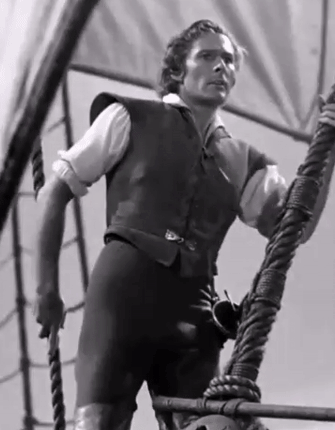
That's it for Captain Blood! Gonna do an old-fashioned review set-up and have a separate post for the Review! And that's because, while the review won't be terribly long...I would really like to talk about the man, the myth, the alcoholic legend himself, Errol Flynn.
See you in the Review!
#user365#365 days 365 movies#365 movies 365 days#365days365movies#365 movie challenge#365 movies a year#action january#action#action movie#swashbuckling#pirate movie#pirates#captain blood#michael curtiz#errol flynn#olivia de havilland#basil rathbone#action genre
8 notes
·
View notes
Text
January 1, 2024: The Great Train Robbery (1903)
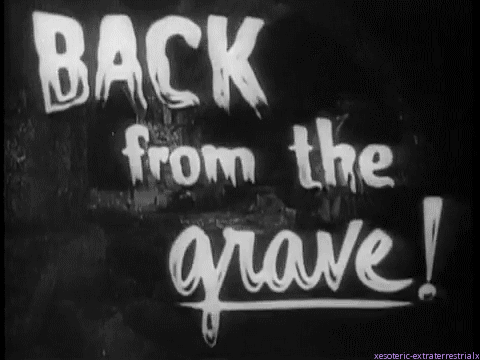
I LIIIIIIIIIIIIIIIVE
So. It's been a while. Life has been busy for the last couple of years, lemme tell you. I love this blog and I love movies, but writing can be...time-consuming for me. Anyway, I figure, why not start this whole thing over again, huh? Well, mostly. Am I gonna get to 365 movies this year? Frankly, that's unlikely, for a number of reasons. BUT! I can at least start small. And, since doing action films in January is a bit of a blast from the past...why not go all the way back this time? Plus, hey - it's a good way for me to get back into the swing of things.
Film history time!

Without going too far into it, the modern film industry began in the 1890s. The first moving pictures were mostly short documentaries, showing live as captured through multiple successive images. L'arrivée d'un train en gare de La Ciotat is often called the first film publicly shown, but that's a misconception. What is true, however, is that the film was made by two luminaries in film history: the Lumiere brothers. Their invention, the cinématographe, was essentially an early film camera, and the brothers used it to document real life.
However, for every good 19th century inventor, there's got to be a rival. And honestly, when you're talking about the 1890s, there's only one real rival to speak of for a given inventor: the Wizard of Menlo Park.
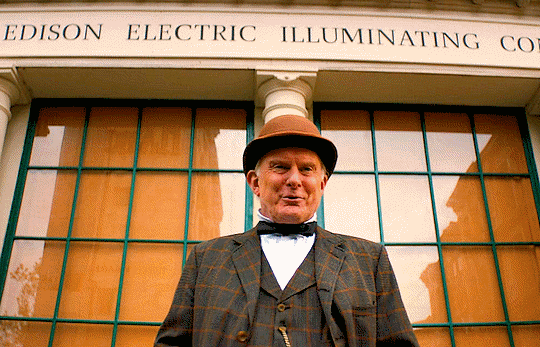
Edison, of course, is legendarily one of the biggest assholes in American history. However, to his credit, the man was genuinely brilliant. Coming up with or perfecting various contraptions and inventions, Edison was a dynamo. In 1889, he had the idea for a device that could capture and display visuals to accompany sounds from the phonograph (which he'd, of course, invented). He had a member of his think tank, William Kennedy Dickson, develop the device, and they created their own early video camera of sorts. With the combination of these two teams, amongst others here and there, the first films began distribution around 1893.
However, again, these were mostly capturing real-life footage. The first narrative films began around 1896, likely with La Fée aux Choux in that year. A minute-long film, this is arguably the first non-documentary to be produced, and would be the first of a new industry. And, fun fact, the first film to be directed by a woman, Alice Guy! After this, the Edison Manufacturing Company released the first commercially available film, The Kiss, and made buckets of cash. The film industry is born.
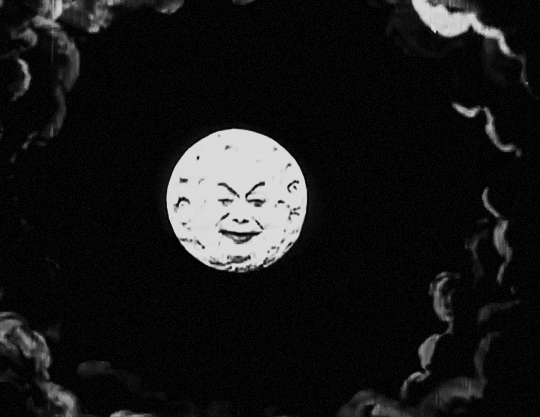
But to really hit the head on narrative film, you have to go back to France. There, illusionist Marie-Georges-Jean Méliès expanded the genre with creative sets and productions that took film into the realm of the fantastic. Inventing a number of basic tricks like dissolves and multiple exposures, Georges is the true pioneer of early film. His 1902 film, Le Voyage Dans La Lune (you know, the one where they land a ship in the Moon's eye) is considered a classic to this day, amongst other Méliès staples like Cendrillon and Le Manoir du Diable.
However, Georges isn't alone. The UK has a slew of filmakers entering the scene with their own efforts, while in the US, Edison's company is continuing their work as well. Most prominently for this story, perhaps, is the work of one of Edison's early cameramen, and therefore one of his first directors, Edwin S. Porter. Porter started with Edison in 1901, and was one of the first real film scholars. Taking from the other prominent directors of the day, he injected craft into the films he worked on for the company. At this point, one of the big things in American cinema was the brand new Western genre.

This is the point to clear up a bit of a misconception about Western films: The Great Train Robbery was in no way the first one. OK, so, the Western has its origins in Wild West shows, like Buffalo Bill's Wild West, which would travel around the world to show off the adventure and action of the American West. In fact, that GIF up above is Annie Oakley, who was filmed by Edison's Kinetoscope as an early film doing her sharpshooting act, which was a part of the show! Anyway, these exhibitions also traveled to the UK, where they made a massive impact. America was the land of the Wild West, and it arguably wouldn't shake that image until around World War II.
Because of this, the first Western films were actually filmed in England, not the United States! The first was Kidnapping by Indians in 1899, followed by A Daring Daylight Burglary in 1903. That film in particular inspired Potter, alongside an 1896 play called The Great Train Robbery, to make...well, you read the title of the review. That film is sometimes called the first Western film by mistake, but is usually forgotten in favor of Porter's film. In any case, though, the Western genre was born in the silent film era.
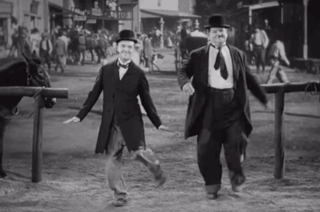
From that point, of course, history is made. Stars like Tom Mix, John Wayne, and Jay Silverheels make their way into the public zeitgeist. Characters like Bronco Billy, or the Lone Ranger and Tonto become household names. Classic films like Stagecoach and more bring the genre to new heights, while even comedians like Laurel and Hardy (above) get into the game with Way Out West. Even actual Western figures like Wyatt Earp became a part of the industry briefly, consulting on how things were in those wild days. It was a new dawn for film, and a unique era.
Of course, I've talked about Westerns before. Didn't get to cover much that month, but I covered a few films like Stagecoach. I even got some facts wrong in that recap about the first Western! Go figure. Anyway, that's a brief history of the Western film genre up to this point. But why cover this now? Well, this is also, for all intents and purposes, one of the first action films in cinema history. Ironically, the idea of action on screen would kick off an entirely different genre. Rather than spinning off into the Western, which became its own thing, the first iteration of the action genre was the adventure film, and guns were supplanted by another weapon.

...I really wanna talk about this film on this blog, because I adore it so much. Anyway, the swashbuckler was the next real action film genre to emerge, but that's a question for the next review, I think. In the meantime, let's get to The Great Train Robbery! This post is a little bit of a return to form for me, writing a recap and review with my 5 categories of criticism. This format might not be maintained with every film I talk about this year (however many that'll be), but I'll play it by ear depending on the film! And, so, without further ado...
SPOILERS AHEAD!!!
Recap

This recap is gonna be kinda weird, since as far as I can tell...there are no dialogue cards in this movie. A lot of what I'm writing here is a combination of inference and observation, as well as coordinating it with other synopses online after I'm done writing. So, yeah, this is an interesting one. Completely silent, as well.
A pair of bandits enter the room of a telegraph office, holding the clerk at gunpoint, and ordering him to write a missive of some kind before tying him up. The entire team of four bandits wait outside of the water tower used to refuel this old steam train, then sneak aboard. They immediately enter a firefight with a mail clerk on the train (who's apparently packing, damn), and kill him, then use a stick of dynamite to open a box that I assume contains valuables.
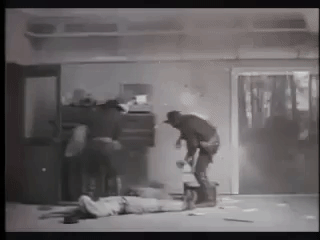
Two of the bandits climb to the top of the train, where one has a fist-fight with the fireman and...throws him off the train, damn! It's a dramatic throw, too. Anyway, once this happens, the train stops, and the bandits hold the passengers hostage aboard the train as the engine car is disconnected. The passengers are held up for their belongings, and...Jesus, guys, there are a LOT more of you than there are of the gunmen! Somebody just jump one of 'em!
Well, as if to answer my question, one of the passengers tries to run away, and gets shot in the back for his trouble. So, yeah, OK, I see the risk, but...I dunno, they only have so many bullets, I think you guys could take 'em. Anyway, the bandits escape, and the passengers immediately tend to the one who was shot. The bandits board the engine car and take off with their loot.
The party escapes into the woods a-ways down the train tracks, and meets up with their waiting horses. Meanwhile, the operator back at the station manages to get up and send out a message. His young daughter walks in and VERY smartly cuts her dad loose, making her the official hero of the film. She wakes him up, and we cut back to a dance party attended by some local lawmen. We get that Western trope where the lawmen shoot at a guy's feet to get him to dance, leading me to wonder if this is where that trope comes from?
The operator bursts in and tells the group of the trouble. They ride out to confront the bandits on horseback, but one of them gets shot in the process. Eventually, this leads to an all-out brawl in the woods, where the bandits are cut down as they count their loot. Good guys win, and the entire film ends with this classic shot of one of the bandits.
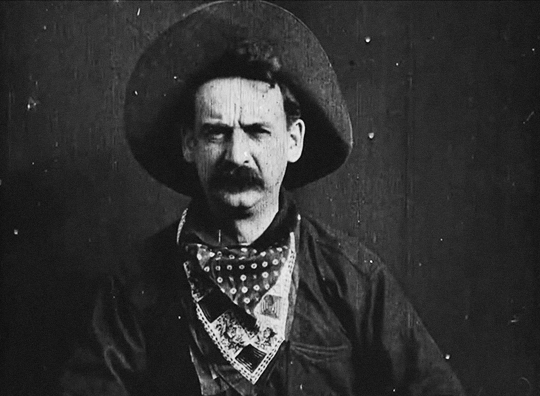
Review
So! Can I even review this one the way I would normally? I mean, probably; short films and silent films are still both films, after all, so it's not like it doesn't qualify. But there are some things obviously missing, or that need to be taken into context here. So, to go through it via bullet point method:
Cast and Acting - 7/10: Well, the actors are mostly forgotten, sorry to say; and while we know their names, none of them were actually credited in the film. The main character is arguably the bandit leader, as played by Justus Barnes, and possibly Gilbert Anderson as a few characters (including the dancer in the dance hall and the shot passenger), and Robert Milasch as the tied-up clerk (I think). Plus, it has arguably the first child actor in the form of Marie Snow, but that may need to be fact-checked. Still, they were all fine, especially for the time. Acting for no audience was sort of a new thing, after all. Hard to judge, this one.
Plot and Writing - 8/10: Hey, there is a plot, even if there's not really writing beyond a screenplay. Our writers here are director Edwin S. Porter and Scott Marble, who wrote the play this was based on. And for what it's worth, it's a simple plot. Men rob train, men get stopped. That's it. Not exactly Primer, this one.
Directing and Cinematography - 8/10: For what it's worth, I think Edwin S. Porter did a decent job in this outing. Again, this is a new doctrine entirely, so it's not like we're gonna find much creativity in either category here. Hell, according to some angles, Porter technically invented the concept of direction, but that's a very nuanced take on his role. At this point, directing just meant pointing the camera. Cinematographer (and yes, there was one) J. Blair Smith also did fine, as far as I'm concerned. Plus, hey...that last shot is iconic.
Production and Set Design - 9/10: Honestly, felt like I was watching a train robbery. So, it may feel a little Party City in terms of the bandit and lawmen costumes, but it also was authentic, so...yeah, high marks for this one.
Editing - 9/10: Normally, of course, I'd put music in this category, but...well, there's no music. So, it falls to editor...uh...oh. Shit. Wait, there's no actual editor for this one? I guess the closest I can get is Edwin S. Porter, who really carried this film. And there is editing, there has to be. After all, it managed to tell a story with literally no dialogue. No cards, no mouthed word, no music, nothin'. And yeah, I really wish that first or last one was in here at least, but the film still works without it.
So, yeah, in the end, that's an 84% for me! Which is probably causing some elderly film critic's tenderly cared-for stress-rage aneurysm to finally pop, but hey - it's how I feel. Great piece of history, completely free, and required cinephile viewing! Just go to Wikipedia or the Library of Congress.
OK, with that short-fill warm-up finally done, let's proceed through action film history! Good to be back!
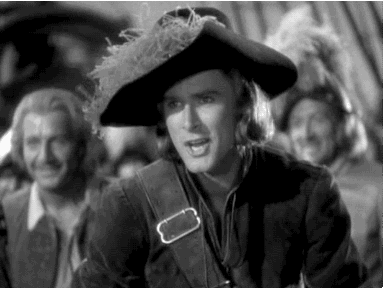
Next: Captain Blood (1935); dir. Michael Curtiz
#user365#365 days 365 movies#365 movies 365 days#365 movie challenge#action january#action#action movie#western#western film#action film#action genre#edwin s porter#edwin s. porter#the great train robbery#the great train robbery 1903#365days365movies#silent film
5 notes
·
View notes
Text

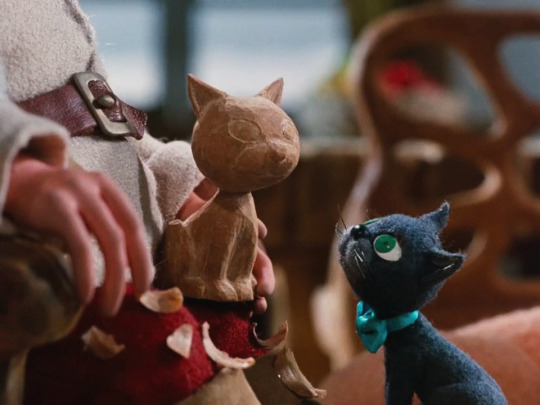
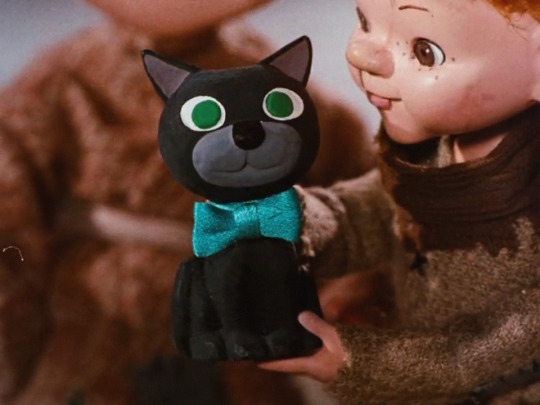



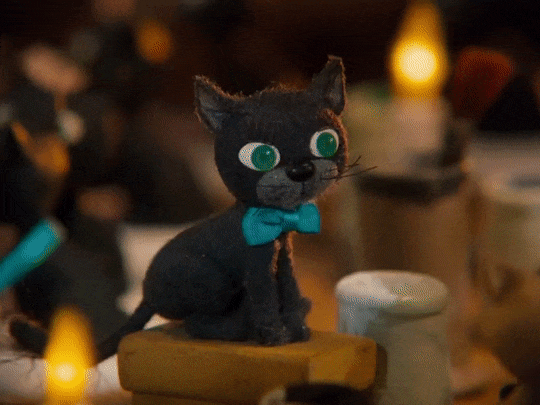
The Life & Adventures of Santa Claus (1985) ��
[letterboxd | imdb]
Director: Jules Bass & Arthur Rankin, Jr.
Studio: Rankin/Bass Productions & Pacific Animation Corporation
15 notes
·
View notes
Photo



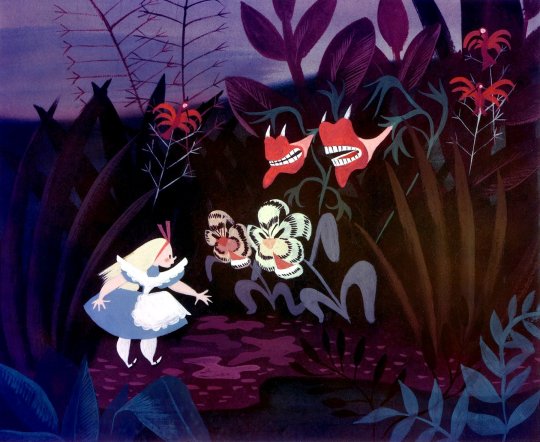
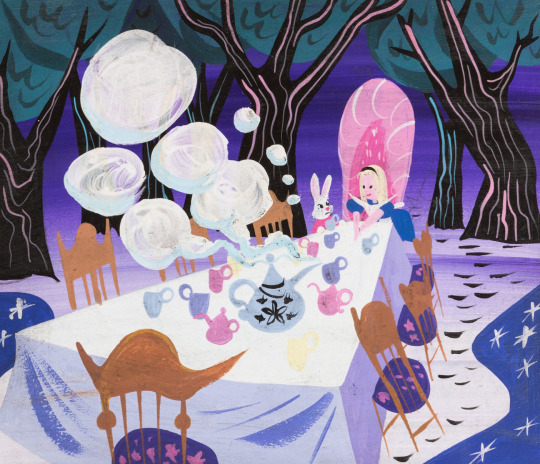

Concept art by Mary Blair for Alice in Wonderland (1951)
3K notes
·
View notes
Text
Still think this is a highly underrated film, and it should be seen by more people! Check out my Recap (here and here) and Review if you're interested in this one! I recommend it if you're into romance, and especially if you're into LGBT fiction! Honestly, if you like Call Me By Your Name, you'll like this one. And the bonus is, no Armie Hammer!
Desert Hearts (1985)

Director: Donna Deitch
Writer: Natalie Cooper (screenplay), Jane Rule (based on the novel Desert of the Heart)
Runtime: 96 minutes
Genre: Drama
What's it about?: In 1959 Reno, Nevada, literature professor Vivian Bell stays at a dude ranch while awaiting her divorce to process. There she meets Cay, an artist who works at a local casino. Things go from there as they tend to do.
Do you think it's any good?: Yes. Of course it's incredibly influential, a cinematic landmark, and known as one of the films in the lesbian canon. But it is worth all that hype. The cinematography and editing really shine (though it does have a few wipe transitions that can be jarring and there's some ADR that's really obvious and distracting), and the acting is good too. Patricia Charbonneau, who plays Cay, is electrifying anytime she appears on screen. The writing can be a bit stiff, more literary than realistic which doesn't translate that well onto film sometimes. No death, no violence, just 50s dyke drama in the desert.
#desert hearts#romance#romance film#romance genre#romance movie#romance february#user365#365 days 365 movies#365 movie challenge#365 movies 365 days#365 movies a year#365days365movies#donna deitch#LGBT film#LGBTQIA fiction
13 notes
·
View notes


